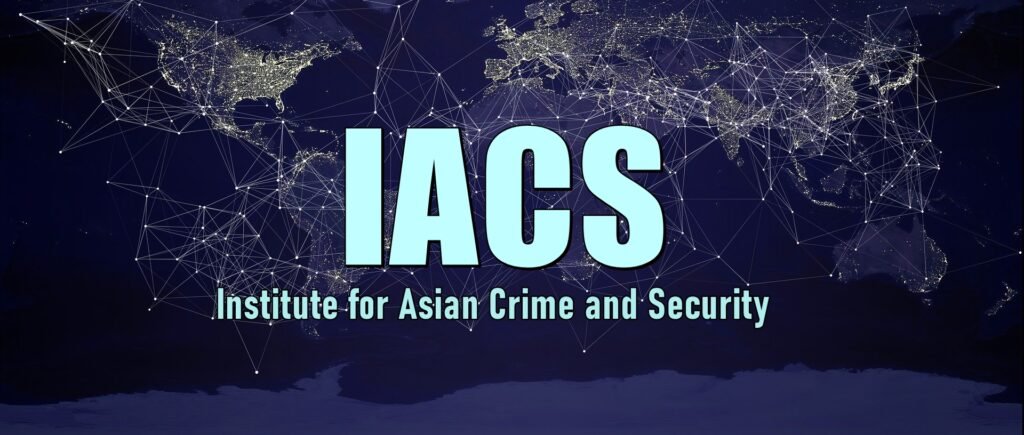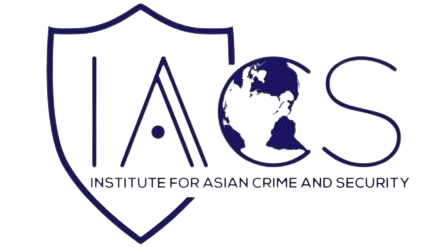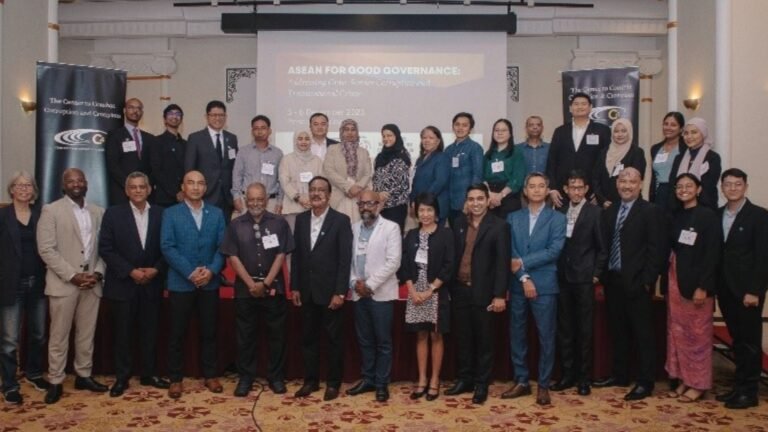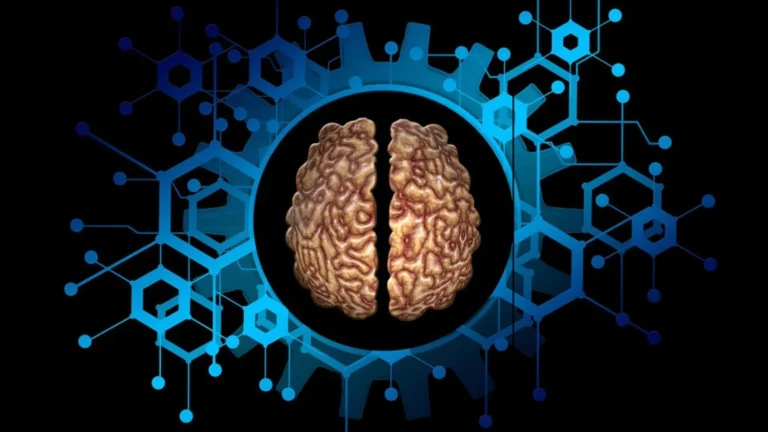Since February 2022, rising global fuel prices due to the Russo-Ukraine War and a weakening Laotian Kip, a latent effect of the Covid-19 pandemic, have resulted in a steep surge in fuel import costs for Laos’ citizens and businesses (Storey & Choong, 2022). The surge in fuel cost has consequently resulted in a growing and persisting fuel shortage, as importers cannot purchase the supply needed to match the country’s fuel requirements – with only a purported sixth of the necessary supply being imported (Stangio, 2022).
In Laos’ urban areas, extensive and persistent congestion is being reported at gas stations (Reed, 2022), and more recently, in Laos’ rural areas, petroleum-dependent agri-businesses and farmers have issued calls for government intervention (Stangio, 2022). Additionally, the traditionally pliant state-controlled Vientiane Times published a rare critical article on June 3, 2022, which examined the impact of the fuel shortage on rural communities (Sengpaseuth, 2022). While the article was not ‘ground-breaking’ from an informational perspective, it is a surprising recognition by a state-owned entity and wholly revealing regarding the rising political tensions, civil discontent, and severity of the crisis.
As neither the inflation of the Laotian Kip nor the Russo-Ukrainian conflict shows signs of remission, it is safe to assume that the high import costs of petroleum products will perpetuate in the medium term. Considering the above, coupled with rising civil discontent, the question should be asked: How would a persisting fuel shortage affect Laos’ internal security climate?
This article defines the phrase ‘internal security climate’ to investigate this question. It identifies three separate aspects of Laotian society that have been impacted by the fuel shortage. The article closes with a discussion of whether the standing Laotian government can weather the socio-political and economic turmoil accompanying a persistent fuel shortage.
Internal Security
Otherwise known as national security, the factors and indicators can vary between state and entity. As such, it remains difficult to establish a widely recognized definition (Nebo, 2022). In its original form, national security referred solely to the freedom of a state from military threats (Romm, 1993). However, despite an ongoing border dispute with Cambodia and small-scale sporadic clashes with Hmong rebels in Northern Laos, the country has no notable ongoing military challenges. Hence, the traditional understanding of internal security cannot illustrate the dubious socio-political and economic climate Laos is currently experiencing and, based on global precedent, a climate that has the propensity to cause mass civil unrest, as seen earlier this year in Sri Lanka (Mallawarachi & Wiseman, 2022).
However, the more contemporary forms of internal security have the nuance required to investigate the latent effects of complex and contemporary risk factors. One contemporary form of internal security, and the working definition of this article, was developed by Nebo (2022) and refers to the level of peace within a sovereign state or other self-governing body, a level that is decided by military and non-military factors (Romm, 1993; Yakubu & Shuaibu, 2016; Nebo, 2022).
To reiterate, the traditional security climate in Laos remains stable despite growing public dissent and growing financial default risk; risks that have the propensity to induce a traditional security crisis include widespread civil unrest, political violence, and violent crime. Therefore, to accurately forecast how a lasting fuel shortage would affect Laos one requires non-traditional indicators which would help ascertain to what extent Laos’ internal security climate has been impacted thus far. For the sake of brevity, this article will use the three non-traditional indicators proposed by Nebo (2022); political stability, infrastructural risk, and economic status. The current status of these indicators from a Laotian perspective will be discussed in the sections below.
Current Political Regime
Laos is a one-party state, and the Laos People’s Republican Party (LPRP) has been the only legal political party in the country since the 1980’s (Wescott, 2003; Yamada, 2018). The LPRP claims about 5% of the Laos populace as party members, and over the past decade has used extensive surveillance, mass arrests, intimidation, and enforced disappearances to decisively crackdown on political dissent.
Despite the LPRP’s heavy-handed approach, as of 2020, 79% of the country’s populace now has internet connectivity (Yap, 2020), meaning that ‘traditionally’ effective methods used by the LRPR to negate political dissent are no longer sufficient. When compounding the above with an unprecedented mix of inter-related socio-economic challenges (depreciating currency, mounting debt, job liquidation due to lockdowns, high inflation, and fuel shortage), public discontent has risen to a degree not seen in the past two decades. Additionally, the traditionally pliant and state-run Vientiane Times published an article on the severity of fuel shortages faced by agricultural workers and businesses. The report claimed that “some officials and fuel companies are attempting to downplay the situation” and that “members of the public are demanding solutions instead of denials that a crisis exists” (Sengpaseuth, 2022). One would therefore anticipate, and expect, the rise of an alternative political movement to push for political change, however, as of this writing there has been no indication that such a movement exists. Therefore, the single-party system remains relatively stable.
Infrastructural Risk
Laos is a landlocked nation and, therefore, heavily reliant on road and transport infrastructure. Over the last decade, the nation has become the dominant supplier of renewable energy provision to Singapore and other ASEAN members, a process that has the propensity to significantly bolster the nation’s struggling economy (Atkinson, 2021; Tan, 2022). However, despite the above, according to the World Bank’s Logistics Performance Index in 2018, the Lao PDR ranks 91st in the world for infrastructural quality (2018). This makes Laos the second worst-performing Southeast Asian country and a member of ASEAN (the worst performer according to the World Bank being Myanmar).
The ranking is predominantly due to a weak and inefficient set of road networks and an extremely limited transportation system, which consists of a single national rail line finalized in December 2021 (Yang, 2022). Laos’ infrastructural risk is therefore ranked as high. Despite several large-scale infrastructural projects being planned and semi-developed since 2018, this evaluation comes. The predominant reason for the delays is the nation’s economic woes, which have resulted in labor reduction and material cost increase, which becomes a vicious cycle where high trade costs persist due to transportation challenges which persist due to high trade cost (Hunt, 2022). A depreciating currency, high fuel cost, and persisting inflation will only exacerbate the above infrastructural development delays.
Economic Risk
Laos is a resource-rich nation that has traditionally made a profit from raw resource trade. More recently (circa. 2015) Laos began the sale of renewable electrical energy to its ASEAN partners (Atkinson, 2021; Tan, 2022). Until 2019, Laos witnessed high economic growth and development, and the mid-term economic outlook appeared positive. However, despite the relatively low production costs of the above commodities, Laos had developed a mounting debt of approximately 14.5 billion dollars at the end of 2021, 47% of which is owed to China. The source of this mounting debt was a string of large-scale infrastructural development projects, some of which were Chinese sponsored (Heijmans & Jamrisko, 2022). Following the global Covid-19 pandemic, a series of lockdown extensions meant that debt repayments were delayed (Strangio, 2021), and ultimately left the nation with just under $1.3 billion in financial reserves at the end of 2021. Unfortunately, as explained above, Laos’ economic frailties were further exacerbated by concurrent high inflation and rising fuel costs, and has purportedly put the country in its worst financial state inception (Heijmans & Jamrisko, 2022).
In mid-June 2022, citing weak governance and insufficient foreign exchange reserves to cover maturing external debt, Laos credit rating was reduced to Caa3 – meaning that the nation has been judged to be of poor standing and are subject to very high credit risk (Nasdaq, 2022; Heijmans & Jamrisko, 2022). Taking the above into consideration, Lao’s economic risk rating is high, as the potential of Laos defaulting to China remains high. However, it should be noted that Laos has received international aid from the USA, which, with effective financial management, can result in a clearance of Laos’s debt to China. Unfortunately, this move only serves to delay a potential default, merely changing one creditor for another.
Letter of Credit and Political Dissent
As seen in other countries (Sri Lanka, Nigeria, and even the UK), fuel shortage can lead to significant civil unrest (Jayasinghe & Ghoshal, 2022). However, the LPRP has already taken action by issuing a Letter of Credit to fuel importers. The Letter of Credit is worth $200 million, which equates to approximately 200 million litres or two months of Laos fuel needs (Vientiane Times, 2022). Unfortunately, Lao’s high economic risk means that if the global fuel price does not see a substantial reduction within the afforded time frame, Laos will once again be subject to a fuel shortage, one which the government may not be capable of amending due to its low financial reserves.
Unfortunately, there is no indication that the Russo-Ukraine conflict will subside in the near-term, and therefore there is a high likelihood that the high fuel prices would persist throughout Q3 of 2022. Therefore, this begs the question; can the LPRP weather the socio-political turmoil that would accompany a persisting fuel shortage?
From a socio-political standpoint, while civil unrest and dissent are likely to grow in the coming weeks, the LPRP is likely to remain in power, at least in the mid-term. The reason is that the government maintains a firm grip on the nation’s security forces and socio-economic institutions. Furthermore, even if the intent exists to push for political change, there is no political vehicle or modality that can facilitate it, as there are no alternative political parties that the public can rally around. Most expressions of public dissent towards the LPRP are on social media, with some recent posts calling for protests to be held – though none have materialized thus far (Macan-Markar, 2022). With the above in mind, the government may be forced to dismiss officials to appease public anger, to stop dissent from developing into tangible unrest, and to buy time for external economic pressures to ease.
Works Cited
- Storey, I., & Choong, W. Russia’s Invasion of Ukraine: Southeast Asian Responses and Why the Conflict Matters to the Region. ISEAS – Yusof Ishak Institute. 2022(24). Retrieved from: https://www.iseas.edu.sg/wp-content/uploads/2022/02/ISEAS_Perspective_2022_24.pdf
- Wong, R., & Onn, L. P. (2022). The Intractable Challenges Facing Energy Trade in Southeast Asia. ISEAS – Yusof Ishak Institute. 2022(19). Retrieved from: https://think-asia.org/bitstream/handle/11540/14893/ISEAS_Perspective_2022_19.pdf?sequence=1
- Strangio, S. (2022). Fuel Shortages Threatens Rural Crisis in Laos. The Diplomat. Retrieved from: https://thediplomat.com/2022/06/fuel-shortages-threatens-rural-crisis-in-laos/
- https://www.ft.com/content/1f53abbd-2e49-4fe2-809c-f6dde97632fe
- Sengpaseuth, P. (2022). Farmers call for urgent assistance as fuel crisis persists. Vientiane Times. Retrieved on June 26, from: https://www.vientianetimes.org.la/freeContent/FreeConten_Farmers105.php
- Sun, M., Song, H., & Zhang, C. (2022). The effects of 2022 Russian invasion of Ukraine on global stock markets: An event study approach. SSRN. 4051987. Retrieved from: https://papers.ssrn.com/sol3/papers.cfm?abstract_id=4051987
- Nebo Sr, A. M. The Dark Side of National Security: The Case of Russia‘s Invasion of Ukraine. https://www.researchgate.net/publication/360589504_The_Dark_Side_of_National_Security_The_Case_of_Russia%27s_Invasion_of_Ukraine
- Romm, J. (1993). Defining national security: the nonmilitary aspects. Council on Foreign Relations. New York. 122. ISBN 978-0-87609-135-7.
- Yakubu, U., Shuaibu, M. (2016). The Concept Of Security and The Emerging Theoretical Perspectives. Federal University, Dutse. Retrieved from: https://www.researchgate.net/profile/Shuaibu_Mohammed2/publication/339676247_THE_CONCEPT_OF_SECURITY_AND_THE_EMERGING_THEORETICAL_PERSPECTIVES
- Mallawarachi, B., & Wiseman, P. (2022). Sri Lanka Faces Humanitarian Crisis and is Dependent on Aid. Public Broadcasting Service. Retrieved from: https://www.pbs.org/newshour/world/sri-lanka-faces-humanitarian-crisis-and-is-dependent-on-aid
- Wescott, C. (2003). Combating Corruption in Southeast Asia. In Frank-jurgen Richter & John Kidd (ed.). Fighting Corruption In Asia: Causes, Effects And Remedies. 237-269. World Scientific. ISBN 978-9814486934.
- Yamada, N. (2018). Legitimation of the Lao people’s revolutionary party: Socialism, Chintanakan Mai (new thinking) and reform. Journal of Contemporary Asia, 48(5), 717-738. Retrieved from: https://www.researchgate.net/publication/323422285_Legitimation_of_the_Lao_People%27s_Revolutionary_Party_Socialism_Chintanakan_Mai_New_Thinking_and_Reform
- Yap, J. (2020). Digital 2020 Report on Laos Released: Internet, Mobile, and Social Media. The Laotian Times. Retrieved from: https://laotiantimes.com/2020/07/09/digital-2020-report-on-laos-released-internet-mobile-and-social-media/
- Macan-Markar, M. (2022). Laos Faces Public Backlash As Economy Teeters Toward Default. Nikkei Asia. Retrieved from: https://asia.nikkei.com/Economy/Laos-faces-public-backlash-as-economy-teeters-toward-default
- Strangio, S. (2021). Laos Tightens COVID-19 Restrictions as Infections Reach New Peak. The Diplomat. Retrieved from: https://thediplomat.com/2021/09/laos-tightens-covid-19-restrictions-as-infections-reach-new-peak/
- Atkinson, C. L. (2021). Hydropower, development, and poverty reduction in Laos: promises realized or broken?. Asian Journal of Political Science, 29(1), 67-87. Retrieved from: https://www.tandfonline.com/doi/abs/10.1080/02185377.2020.1819356
- Yang, C. (2022). The China-Laos Railway: Yunnan to Vientiane by Bullet Train. China Highlights. Retrieved from: https://www.chinahighlights.com/travelguide/transportation/china-laos-railway.htm
- Tan, A., (2022). Singapore begins importing renewable energy from Laos via Thailand, Malaysia. Asia News Network. Retrieved from: https://asianews.network/singapore-begins-importing-renewable-energy-from-laos-via-thailand-malaysia/
- Hunt, L. (2022). Laos is on The Brink of Sovereign Bankruptcy. The Diplomat. Retrieved from: https://thediplomat.com/2022/06/laos-is-on-the-brink-of-sovereign-bankruptcy/
- Heijmans, p., & Jamrisko, M. (2022). Looming Debt Crunch Positions Laos as Next Possible Asia Default. Bloomberg. Retrieved from: https://www.bnnbloomberg.ca/looming-debt-crunch-positions-laos-as-next-possible-asia-default-1.1778896
- Nasdaq. (2022). Financial terms: Caa3. Nasdaq Inc. Retrieved from: https://www.nasdaq.com/glossary/c/caa3
- Jayasinghe, U., & Ghoshal, D. (2022). Sri Lanka fuel shortage set to ease; police clash with protesters. Reuters. Retrieved from: https://www.reuters.com/world/asia-pacific/sri-lankas-fuel-gas-shortages-set-ease-central-bank-governor-says-2022-05-19/
Featured Image: Flickr
About the Author: Kimon Kalliatakis is a Research Associate with the IACS. He holds a BSc in Security Studies and an MSc in Crisis and Security Management from Leiden University.








